| |
A couple of weeks ago, we visited the local model shop. Usually when we drop by, the owner's wife sets out tea and coffee and we visit for a bit after Matthew's done his shopping. This time, she showed me a holiday edition of a Japanese cooking magazine, which got us to talking about apple pie. She apparently had a pie crust in her freezer, which she tried to give me. I had to refuse, citing our lack of an oven. Matthew had told them that he'd be back in a few days with a visiting train buddy. She likes to give us things, so I wondered whether a pie would be forthcoming. Sure enough, when Matthew went back on Monday, he received a pie. A Japanese apple pie, that is. 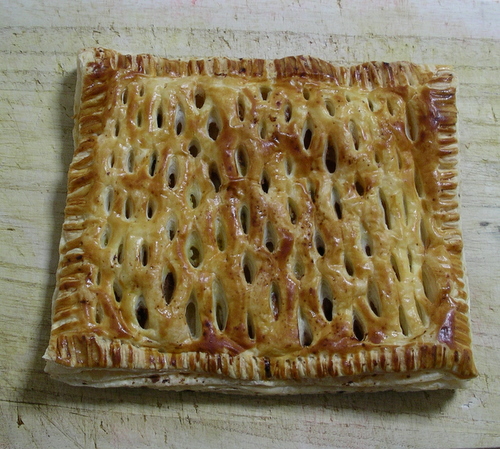
Although we've been here about a year and a half, Japanese packaged foods continue to surprise us. Last night, we made a bowl of ramen that we'd received at a community event a few weeks ago (community events in Japan always involve giveaways of household items). The picture on the package showed some garnishes like scallions, dried bamboo, and a thin slice of cow tongue. Tongue isn't a common ramen accompaniment. We assumed that it represented a serving suggestion and thought the inclusion of tongue kind of odd. The picture made sense, however, when we opened the package and found noodles, soup base, sauce, and a small package of dried garnishes that included . . . a thin slice of cow tongue.
[ add comment ] permalink
Sun-drying persimmons are a common sight around Japan in the fall. 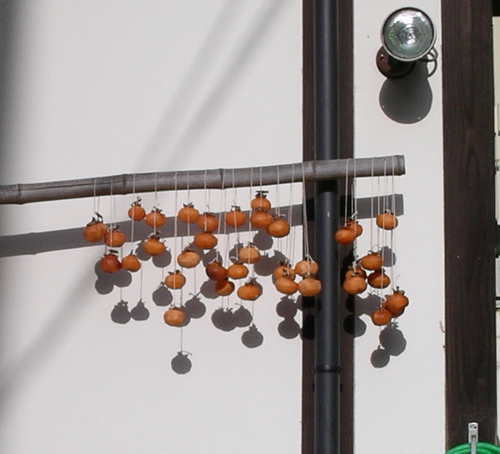 People hang the persimmons from a pole for a couple of weeks, until they shrivel and darken. They then store the dried persimmons, called hoshigaki, for snacking on during the winter.
Winter has already arrived in Kitakami, which means it's time to start making nabe. Nabe is the Japanese word for cooking pot; the term is also applied to various one-pot dishes like soups, stews, or sukiyaki. One of our favorite nabe comes from Akita Prefecture: kiritanpo nabe. 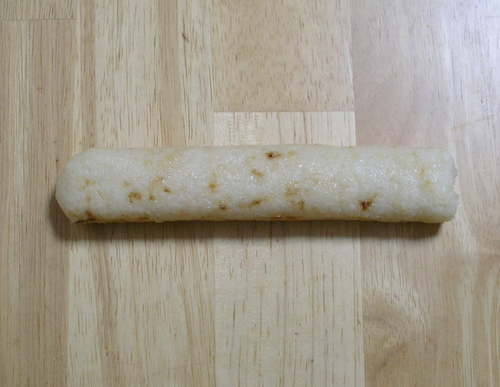 Kiritanpo Kiritanpo is made by mashing cooked rice into a paste, then shaping the paste around a stick and grilling it. Because they get soft rather quickly, they're added to the nabe toward the end of cooking. 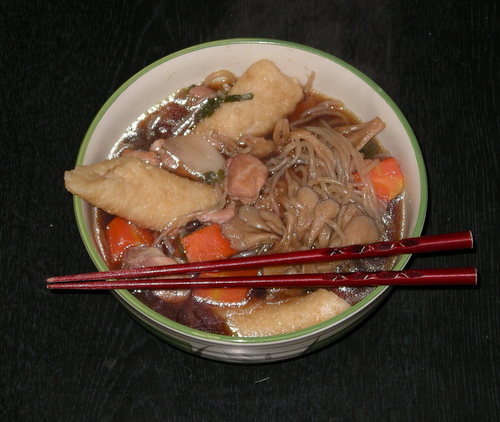 Chicken thigh, shirataki (noodles made of devil's tongue jelly), maitake mushrooms, carrots, and seri (Japanese parsley) rounded out the nabe. It was the perfect dish for a frigid, rainy night. ¡¡
We attended an event for the local Okinawan joint on Saturday evening. As we were leaving, the owner's sister gave us a dragonfruit that she had grown and brought from Okinawa. 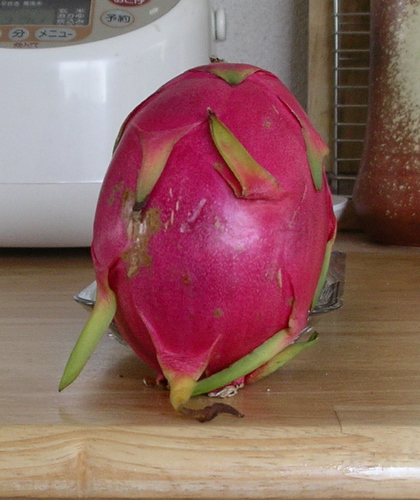 Dragonfruit tastes rather like kiwi, but less tart. They're as pretty on the inside as they are outside. Some are all pink with black seeds; others, like ours, have a thin layer of pink between the skin and white pulp with black seeds 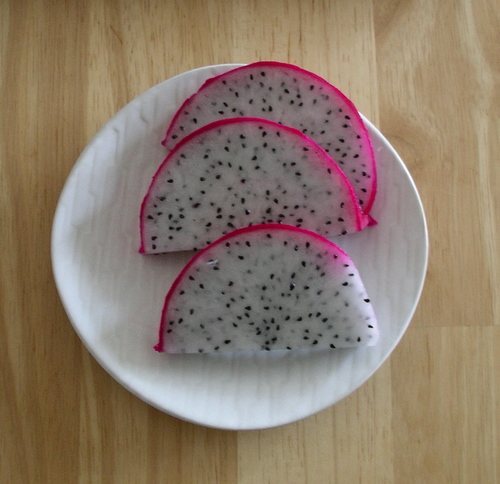
Gratuitous Autumn Food Photo, 2008 Edition
If I had to leave Japan knowing about only one new food, it would be takikomi gohan. 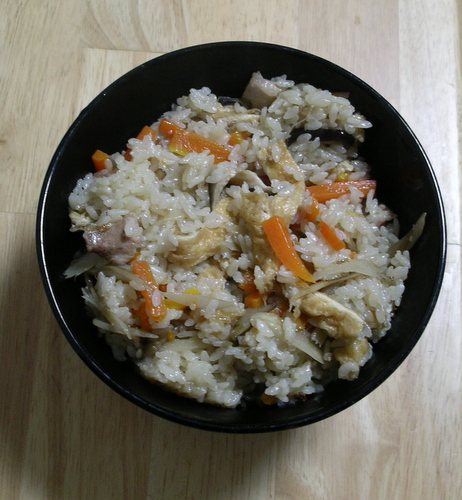 Takikomi gohan Takikomi gohan is rice cooked along with other stuff in water seasoned with soy sauce and other flavorings. It's also called gomoku gohan, five-ingredient rice, presumably because most recipes have five ingredients. This recipe calls for chicken, carrot, shiitake mushrooms, aburaage, and gobou (burdock root). It's one of our favorite fall dinners, alongside some homemade rice-bran pickles.
Wednesday, October 8, 2008, 10:32 PM General, FoodPosted by matthew Why have we posted so many sea photos this week? It's because we took a trip to Miyako, on the Pacific coast of Iwate. Matthew had a model railroad event there, so we took the opportunity to explore part of Iwate we hadn't visited and enjoy some fresh seafood. Miyako is most famous for its spectacular rock formations, especially those at Jodogahama.   There's a protected rocky beach at Jodogahama, where old women spread out konbu seaweed to dry. 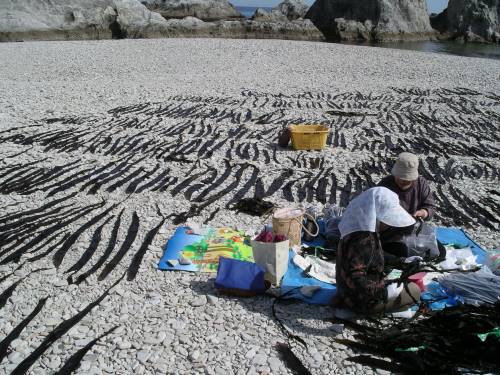 We were there pretty early in the morning, which turned out to be a good thing. We got to see the nearly empty beach, but less than an hour later it was overrun with tourists. 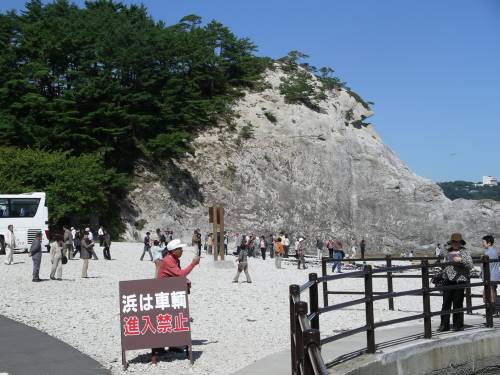 Of course, no visit to the sea is complete without fresh seafood. We stayed at a minshuku (a kind of traditional "bed and dinner and breakfast" lodge) owned by a fisherman. Naturally, the morning's catch was the evening's dinner. 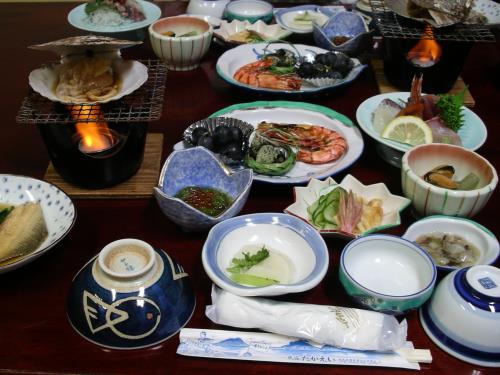
This is definitely not the kind of pepperoncini I ran around town looking for back in May:  As it turns out, this kind of pasta is actually called peperoncino. This batch is from a mix, consisting of a liquid sauce packet (olive oil, garlic oil, soy sauce, and some other stuff) and a separate toppings packet (toasted garlic, parsley, and sliced dried togarashi). It's quite delicious.
A friend gave me a bag of satoimo today. 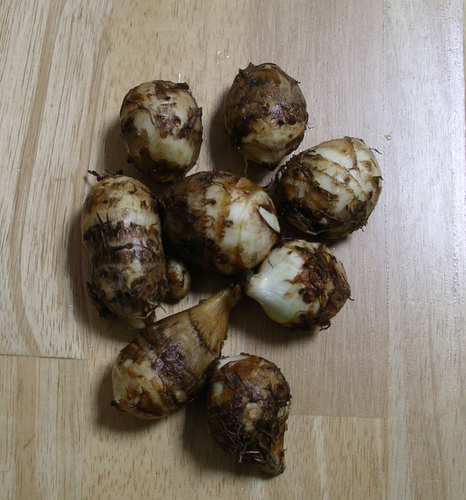 Satoimo Satoimo are probably better known in America as taro root, the basis of the Hawaiian food poi. Here, they're most often boiled, peeled, and served in miso soup. I have a new Japanese-language cookbook that rather conveniently has a bunch of satoimo recipes in it, so I made one of them tonight.  This is satoimo no kurogoma miso ae, taro with black sesame and miso dressing. It was quite tasty ¡½ the satoimo themselves have a mild flavor that went nicely with the stronger black sesame. And a Manhattan.
A friend gave us a couple of goya this weekend, one green and one white. 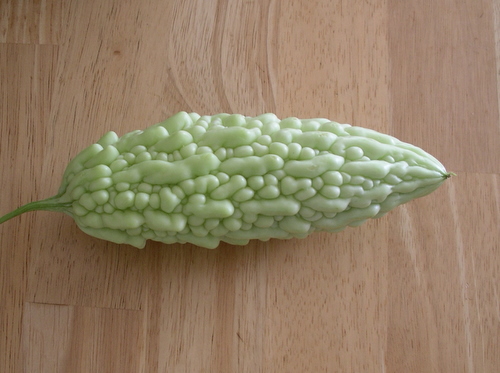 Goya Goya, or bitter melon, is a staple of Okinawan cuisine. It's very bitter but refreshing, and tastes of quinine and grass. Its juice is refreshing when mixed with shochu and soda in goya sours, and its flesh can often be found in chanpuru, Okinawan stir-fries. I made goya chanpuru for lunch today. Besides goya, the chanpuru involved eggs, tofu, thinly sliced pork, ginger, and bean sprouts. 
Back Next
|
|






 Calendar
Calendar




